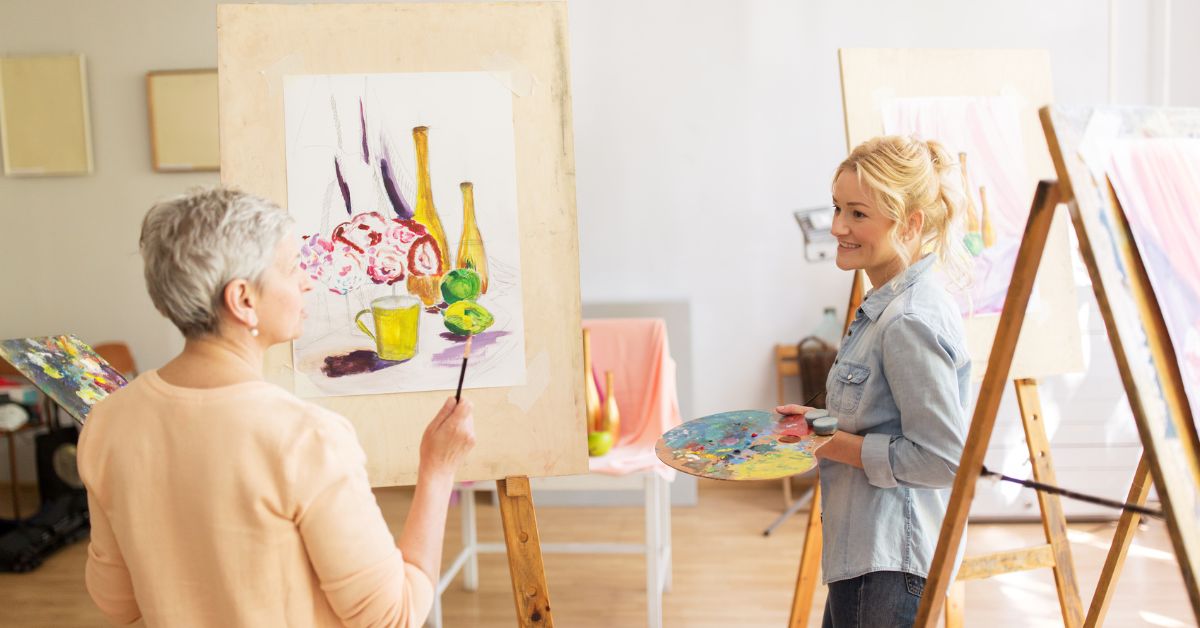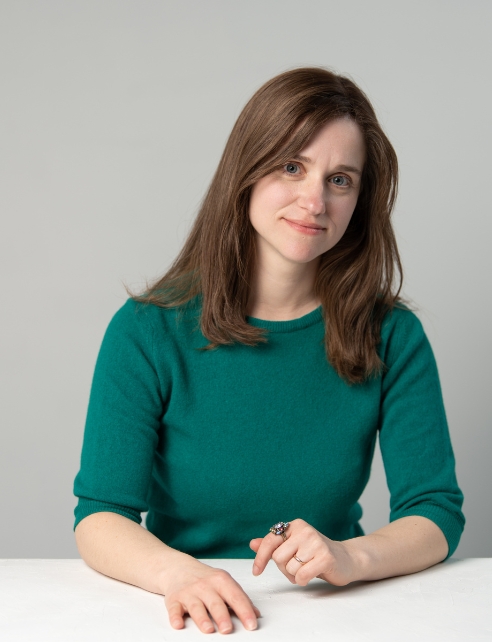Essays and Thoughts
The Power of the Arts to Positively Affect Health

Art is more than a fun category of classes to explore at your local enrichment program. According to researchers, the arts and health are closely linked. Engaging with art—whether through creating it or experiencing it—causes physiological and psychological changes that help reduce stress and promote relaxation. Art can help people process emotions, shift their perspective, and even help relieve pain. As a result, creative pursuits have a positive impact on both mental health and well-being.
People with a wide range of conditions, from anxiety and depression to chronic pain and cancer, benefit from art therapies. And if you’re generally healthy, art can help you stay that way. We’re not trying to say that art is some kind of miracle cure, but it is a fun and satisfying way to support physical and mental health. Here’s how it works.
5 Ways the Arts and Health Are Linked
You may think of mental health and physical health as two separate things, but the truth is that the health of your mind and body are interconnected. When you engage with art, you’re using your body and brain together to accomplish something great.
Art engages our bodies as well as our brains, and has measurable benefits for both mental and physical health.
Whether you’re taking a line-dancing class or learning oil painting techniques, art offers physical challenge, mental stimulation, and a sense of satisfaction. All of this together supports both mental and physical health.
But you don’t have to take our word for it. Here are five research-backed ways that the arts and health are linked.
1. Art Provides Stress Relief
Researchers at the Drexel College of Nursing and Health Professions found that 45 minutes spent creating art significantly lowers cortisol, the stress hormone. Additionally, the study revealed that participants didn’t need to be skilled artists to experience stress relief. Whether you’re a lifelong artist or taking your very first art class, the health benefits are the same.
2. Art Makes You Smart
Engaging with art has been shown to improve cognitive functions such as attention, memory, and problem-solving skills. In 2019, Rice University’s Kinder Institute for Urban Research and the Houston Education Research Consortium sponsored a study of nearly 11,000 elementary-aged students who received greater access to art experiences.
Research found that students given access to arts education got in trouble less, improved writing scores, and were more engaged with school.
3. Art Can Improve Social Connections and Decrease Loneliness
Participating in art events and activities help provide a sense of community and connectedness. Whether taking a group class or attending the symphony, arts provide a connection point. Connection is vital to mental and physical health. Social isolation leads to increased risk of dementia, heart disease, stroke, depression, anxiety, and suicide.
This is particularly troubling because about 36% of all Americans say they feel “serious loneliness,” with young adults and mothers with young children being the most lonely. Even if the only benefit of art was to improve social connections, it would be well worth the investment.
4. How Art Improves Physical Health
Certain art forms, such as dance, can enhance physical health by developing balance, coordination, and cardiovascular fitness. The mental health benefits of art spill over into physical health as well. When people feel less stressed and more connected, they’re more likely to engage in healthy habits like exercise and healthy eating.
For people with chronic illnesses, art therapy can be used to manage pain. One study found that patients undergoing medical procedures experienced reduced pain and anxiety with music therapy.
5. Art Empowers Self Expression
At its core, all art is a way to communicate. Making art offers an opportunity for self expression. Art therapy can be particularly beneficial for people with autism spectrum disorder or speech disorders, as well as trauma survivors. In these situations, art therapy should be overseen by a trained therapist.
Self-expression is just as important for people without these conditions. Expressing yourself is a basic human need, one that directly impacts mental health. The arts and health are both deeply connected to self expression.
How to Get Started With Art
Maybe you don’t think of yourself as a creative person. Perhaps you’re just overwhelmed by the range of art classes and activities available to you. If you’re not sure where to start, pick something from this list and give it a try:
-
- Pick up a craft kit. Yes, these are often designed for kids. No, you don’t have to be a kid to enjoy them. Craft kits remove the stress of choosing an idea and gathering supplies. They’re a great way to experiment with different types of art in a low-stakes environment.
- Color. Soothing, satisfying, and accessible, coloring is a great activity for all ages. There’s a reason adult coloring books sold 150-200% more than usual during the pandemic. Find a coloring book with images you like and get started.
- Take an art walk. Thanks to smartphones, pretty much everyone carries a high quality camera in their pocket these days. Set your phone to “do not disturb” and go for a stroll. Instead of worrying about your to-do list or checking your step count, keep your eyes open and take photos of anything that catches your interest.
- Take an art class. Look around at local art studios, enrichment programs, community theaters, and art museums. You’re almost certain to find a selection of art classes to fit any interest and experience level. Pick one that piques your curiosity and try it out. Get more ideas in our recent blog post, How to Learn Art: 5 Easy Ways to Inspire Your Inner Artist.
If spending time being creative is new to you, you might feel nervous or even a little silly engaging in art. That’s a completely normal reaction to trying something new. Just remind yourself that you’re not trying to be the next Rembrandt.
Your goal in engaging in art is just to explore your world, express yourself, and maybe improve your health along the way.
Remember to have fun and don’t take yourself too seriously. If you’re obsessing about coloring inside the lines or swearing at your sewing machine, you may have lost sight of the larger purpose. Get help from a friend or instructor who can help you refocus on what’s important.
At CourseStorm, we make art classes and other learning experiences accessible to everyone by streamlining the course registration process. Contact us to learn more or start your free trial today.

Nic Lyons
Nic is skilled in scaling start-up edtech and education organizations to growth-stage success through innovative marketing. A former journalist and copywriter, Nic holds a postgraduate certificate in digital and print publishing from Columbia University School of Journalism's publishing course.
